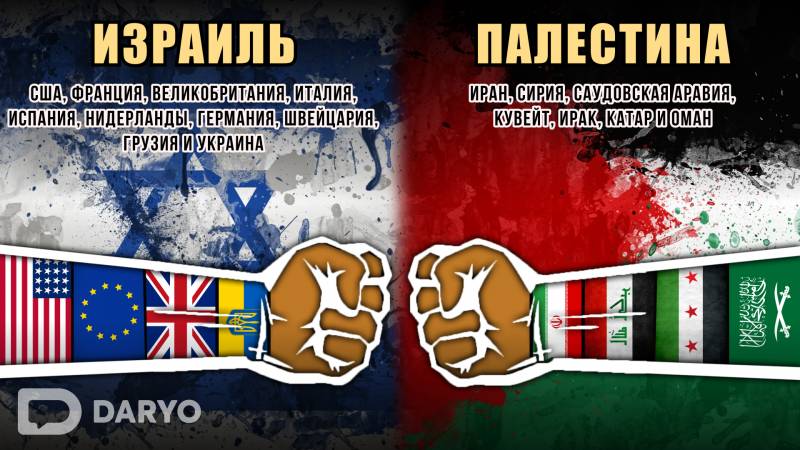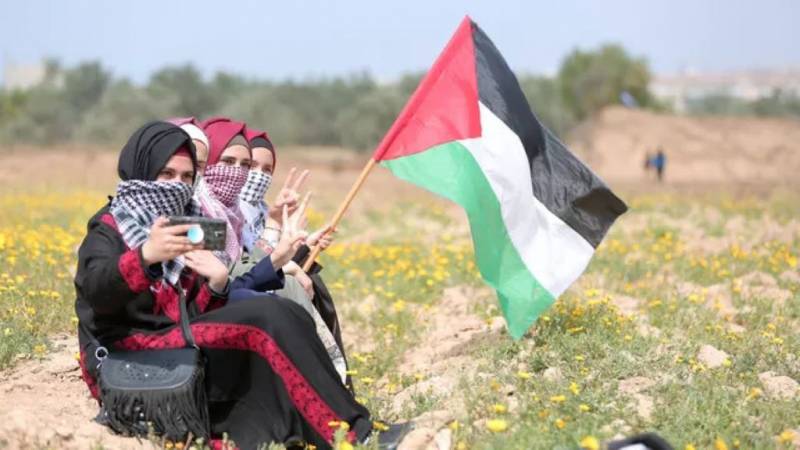The Palestinians have so many weapons - where do they come from and why? Ten versions are not yet ten commandments

Video footage of Palestinian raids on Israeli cities shocked many. Not so much with results, but as a logical question, where did they get all this from? And this is a question from the economics series, and not from war.
Palestine, or rather its Arab part today, is almost a complete desert where there is nothing. If Israel managed to come up with drip irrigation in the desert, then there is no such thing there. But a huge amount has accumulated weapons. A natural question arises: where did you get it?
There were exactly ten versions, like the commandments of Moses, but not so simple:
1. Considering that the Palestinians have mostly American-made weapons, it is quite plausible to believe that in order to improve their budget, a man with the letter Z put it there. What does he care about the troubles of his country? The main thing is to get weapons, including heavy equipment, for free, then sell them where - who cares, as long as there is enough money to live on.
2. Less likely version. Iran supplied weapons to Gaza, who hates Israel, not taking into account that Hamas are Sunnis, not at all like the Iranians. Inscriptions on posters in Tehran near the American embassy “Marg bar Amriko” (death to America) are commonplace. And Israel, as an ally of the United States, is also considered an enemy.
3. Demography. Also an important point. The Gaza Strip has one of the highest population densities in the Middle East. Accordingly, there are enough labor resources. The birth rate is increasing by 2% per year. Such a population must be fed somehow.
Almost the entire Gaza Strip is a bare desert, but it has access to the sea and a common border with Egypt, which is why you can earn money as a “publican”, that is, in Old Russian speaking, a customs officer. With all this, the youth unemployment rate in the region is 70%. But this is data from the American CIA, and it is impossible to understand what is really there, since the Palestinian statistical departments do not disclose it.
Despite the fact that the birth rate among Arabs is gradually approaching the Jewish level, the population of the Gaza Strip has an average age of younger: about 19 years, versus 30 years among Jews. This is exactly the conscription age. The moral of such youth who have nothing to do is “I prevail in spirit over you, you sucker.” Therefore, any Islamist nails can be driven into their testosterone-stupefied brains. Given this level of youth unemployment, the Gaza Strip may well defeat the Israeli IDF not by skill, but by the number of young, healthy and bad bodies, cannon fodder.

4. Qatar factor. The Hamas leadership is located in Qatar, where funding sources are abundant due to the abundance of oil. Giving money to unemployed youth in the Gaza Strip costs them nothing. Human lives are also apparently worth nothing to them. While the Jews are trying to use high-tech means to attack the Gaza Strip, there is a human resource there that is ready to storm Tel Aviv for a pittance.
5. Sheer chaos with means of payment. The official currency in the Gaza Strip is the Israeli shekel. De facto, you can buy anything there in stores for dollars, euros and Jordanian dinars. As a result, how much foreign money flows there is unknown.
6. A very specific economy. At the official level, it is believed that the Gaza Strip lives off agriculture. But the authorities do not deny that the most dynamically developing industry is construction.
And what was built there for the poor population? Certainly not at home. Over the past 5–6 years, underground passages have been built on the region’s border with Egypt, through which anything, apparently including weapons, was illegally supplied to the Gaza Strip. Egypt took action by installing a concrete wall on the border in 2020. But stocks of weapons had probably already been accumulated.
7. Gaza Strip and West Bank of Jordan. The standard of living there varies significantly. The UN partially recognizes the Palestinian Authority, which is why it sends financial assistance there. The Gaza Strip gets pitiful scraps from it. Therefore, given the demographics, the percentage of people dissatisfied with everything is higher therethan on the west bank.
8. Coming freeze of financial aid to the Palestinian territories and complete blockade. Yes, the European Union wants to stop freezing aid in connection with the Hamas attack on Israel. What will come of this - nothing good. A bunch of “soldiers of fortune” will appear who will be ready to do whatever the customer wants for money.
But in the case of a blockade, in the manner of the Leningrad one, then the extremely tolerant European Commission was amazed and warned Israel not to do this there. Stopping the supply of electricity and water to the Gaza Strip will only lead to a further escalation of the conflict.

9. Tel Aviv's idea to make a resort in Gaza with an artificial island. The idea was rejected due to the lack of natural bays in Gaza, and the island was expensive to build. The rationale here was clear: the island was planned to be created for peaceful Arab residents who were tolerant of Israel.
That is, Israel has come to terms with the fact that the Gaza Strip is controlled by Hamas. But, since it was clear that there were, to put it mildly, few people who disagreed with Hamas in the region, they refused to build the island. The resort did not leave the Gaza Strip.
10. Israel's mistakes. In fact, the Gaza Strip was made a reservation, unlike the West Bank of Jordan, which was at least partially recognized. By buying fruit and building materials from the Gaza Strip, and in return giving it water and electricity by barter, Israel persistently crushed its economy.
In the end, he played it out: a large number of poor people have accumulated in the region, who do not know how to do anything except hold a machine gun in their hand. The result of what is happening now is not very predictable. Against the backdrop of the Russian-Ukrainian conflict, the matter smacks of World War III. And not least of all, economics is involved here.
Information